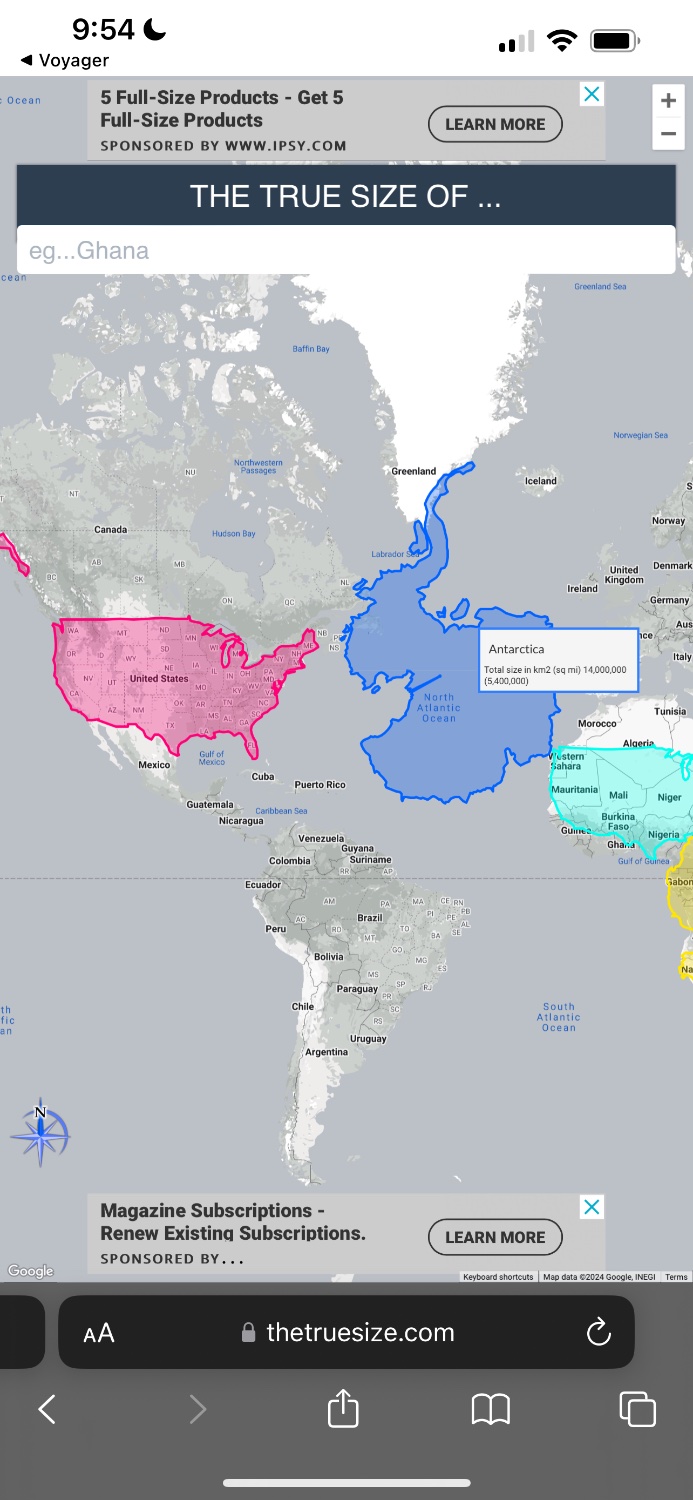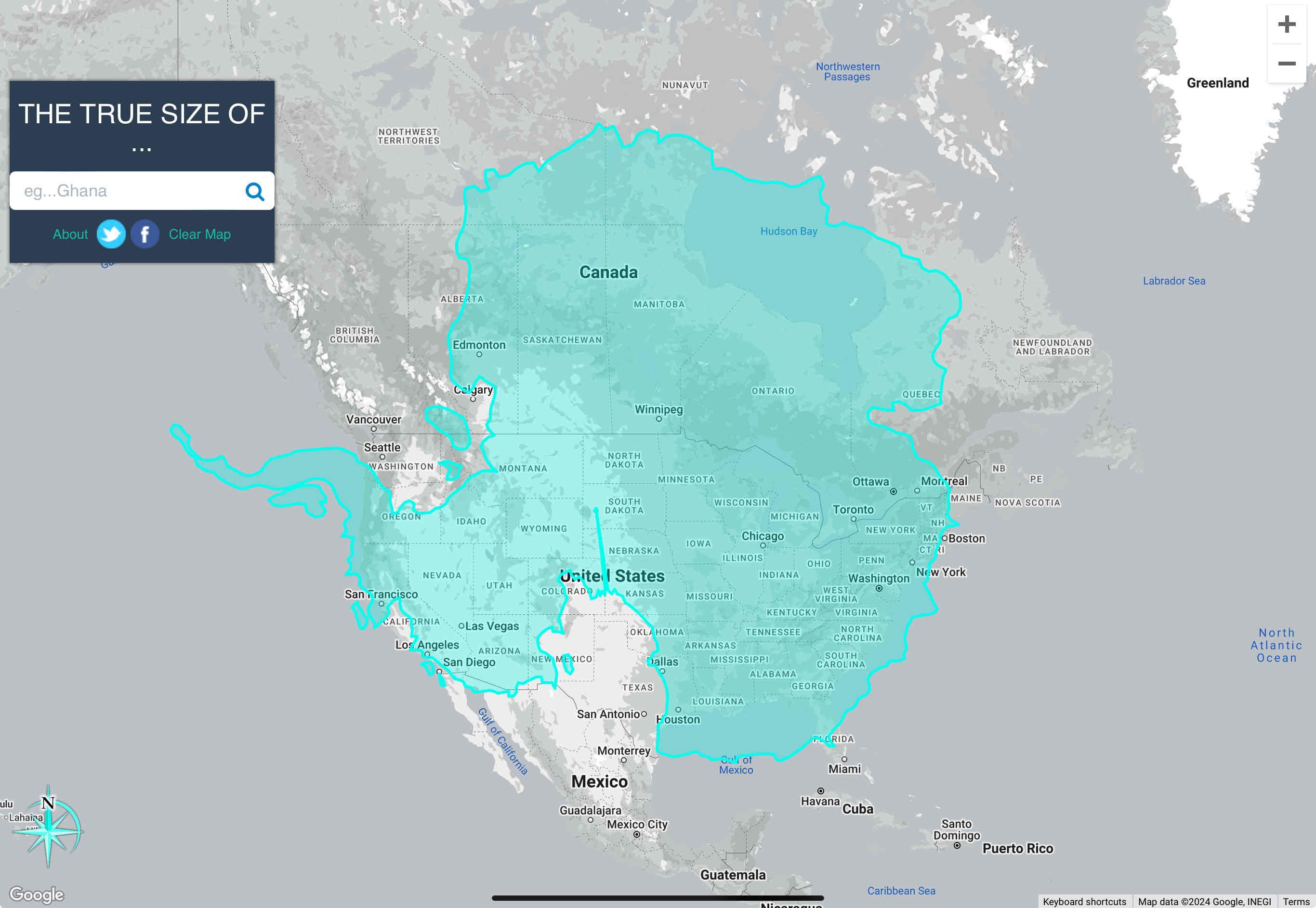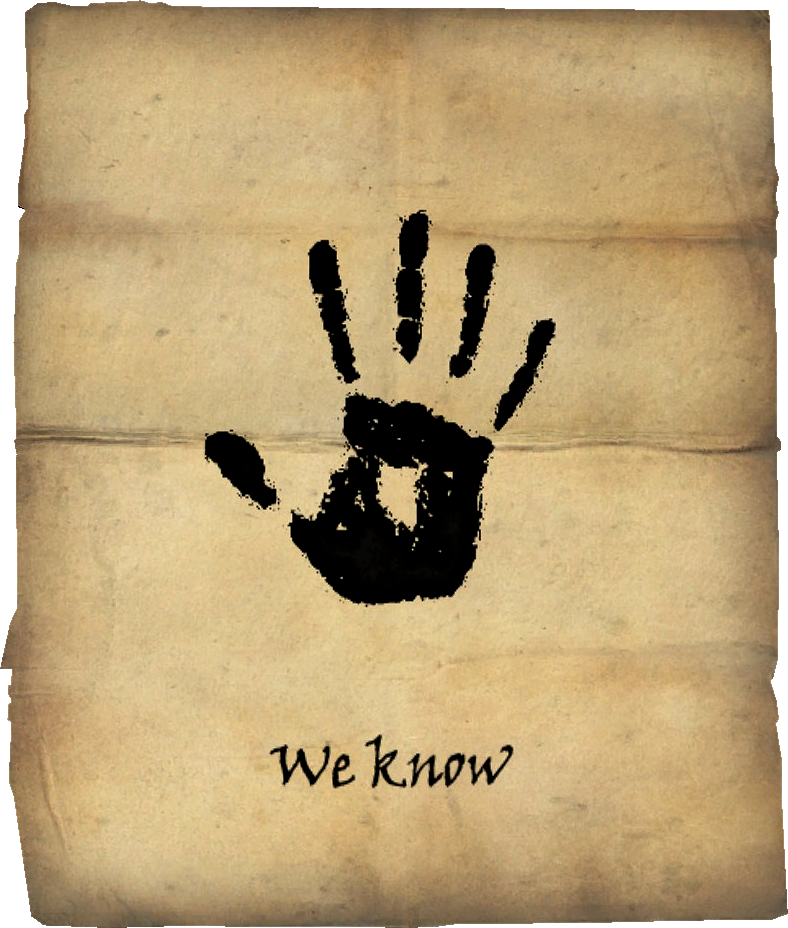It’s also the only continent without a southern coast.
For now. It used to a few million years ago and will again in another few million.
Are you referring to the magnetic pole switch? That happens every 200-1M years, according to patterns on the seafloor. It’s been estimated that the last reversal was 780,000 years ago, so it theoretically could be any day now.
With that being said, I doubt that humanity will agree to turn all maps 180° to correspond.
I thought they were referring to the fact that under the ice its an archipelago, so if the ice melts it will have southern coasts again
Valid point. It’s a shame humanity wouldn’t be around to confirm. lol
If it melts, they’d all be northern coasts.
It’s referencing the pole swap.
Since it’s an archipelago underneath then most, if not all, of those islands would have a southern coast. The only way to not have a southern coast is to have the landmass directly on top of the pole, which could only happen for one island (if no ice is present)
the continental plate also migrates
At the rate of 1 CM/year
deleted by creator
To move a continent north of the equator at the rate of 1 CM per year? You might need a bigger napkin.
Antarctica’s leading coast is 10,000 KM from the equator. Assuming it’s able to continue through Southern Africa at the same rate, it would take 100 billion years to have a northern coast.
southern or northern coast. I had deleted my comment already because I misread yours, but I had mathed the time to move away from the pole, producing a southern coast. not time to cross the equator
I was referring to continental drift. Places move a lot in under 200 million years. Eg https://youtu.be/uLahVJNnoZ4
So my post was a bit sarcastic that eventually it will have a coast but not on any time frame to matter to the human species. :)
Laschamp event! I just edited a related wiki page on late Pleistocene extinctions. Spoiler alert: it didn’t kill the megafauna.
Just flip it over lol
Yeah, because you’ll fall off the bottom into space
Long Earth theory.
Where Saddam
How am I supposed to know how big that is? I don’t see a banana anywhere…
it’s too cold steel wool they don’t have bananas
because it’s smaller than a pixel :)
I yeah i see it now, it’s the pixel in the bottom right corner
it’s 3% more banana-colored than the surrounding pixels, you can’t miss it
there ya go.
Uh, antartica is about as wide as the U.S. and about as tall as it is wide.
So, I just feel like I’m being bamboozled here
Yeah, they certainly are:

That is inaccurate. The correct way to use the tool is to lay the continent over the US. It skews the size and scale appropriately in order to provide an accurate measurement.

It’s also larger in area than the US, including Alaska and all territories.
The total area of the US and its territories is just over 3.8 million square miles. Antarctica’s area of 5.4 million square miles makes it 1.5x the size of the US.
The correct way to use the tool is to lay the continent over the US.
Typical American, declaring that the US is the default country to compare every other country to!
On a more serious note, putting things side by side is the same as putting them over each other. Difference in height are not the same though, as closer to the equator size shrinks. The best way to compare is take two things and put them side by side on the equator - that’s where there’s least distortion.

How very nationalist of you to assume America-centrism where it is completely irrelevant. The comparison that was in dispute was the size of Antarctica vs the size of the US. I was clarifying how to use the tool. You’re still using it wrong, and now you’re being a tool. lol
First sentence was a joke - hence “on a more serious note” for the next sentence. And if you think I’m using it wrong then, well, best of luck to you.
Why do you think the static grey map is in the background? The entire point of the tool is to overlay one nation upon one of the nations on the static map for accurate size comparison. It’s demonstrated clearly in the pop-up instructional video displayed when you first open the website.
Join the Organization of Cartographers for Social Equality today!
Just look at the map, what more proof do you need?
and we certainly wont be in a few hundred years lmao.
Big if true
Can we talk about how big that structure is?
About three times the size of Europe it seems, one hell of a building.
Wait what? Did we just find Hitler’s secret Antarctica base?
That’s the Amundsen–Scott South Pole Station.
Nonsense! Did you see how big that thing is? Definitely Hitler!
According to this projection, it’s bigger than Africa
Ok, but that’s unironically a great map for a TTRPG campaign.
I’m thinking Lovecraft. Plateau of Leng and all that. There’s just this huge, impassable land that goes south for what seems like forever. And…things…occasionally wander out of it.
My country holds a claim and permanent population to a portion of antartica.
Many have “claims”. None are valid though.
How many flags are planted? No flag, no Antarctica. Those are the rules that I just made up.
So then like a bunch of people own Mt Everest.
but that means the US owns the moon, so it’s ok.
I dunno. Looks like the moon just surrendered by now.
idk man i think we would win in a war against the moon.
Yeah but the permanent population is there, sakd claim precedes the treaty.
You’re talking about penguins, right?
humans, in a town called “Villa las Estrellas”.
It seems that treaty: 1959, town: 1984.
The claim is older, 1940’s iirc
All are equally valid
No bears, tho.
And getting smaller everyday
It’s just the ice wall on the edge of the flat earth. Checkmate, globe-lovers!
/s
Serious Q: isn’t there actually a lot resources in Antarctica? Or is it just too difficult to set up shop there?
There certainly are, but…
https://en.m.wikipedia.org/wiki/Antarctic_Treaty_System
This treaty means the entire continent is for science only.
When you say resources what resources are you referring to specifically?
Penguin leather
Cool band name
They do punk songs about Linux.
Not sure but mineables? Im probably oversimplifying because all my knowledge of getting stuff out of the ground comes from games but stuff like metals.
You mean like ores like copper, iron, rare earths that kinda thing. There are seems of minerals that are actually meteorites that have collected in certain spots on a glacier. Haven’t heard anything about other large deposits but usually you would need to do all kinds of geological surveys to find that stuff and since most places are covered in 1mile+ of ice it’s near impossible.













